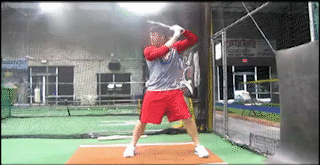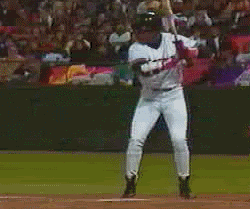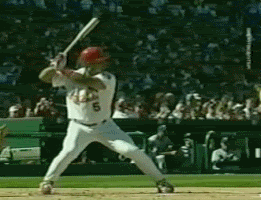Vinny,quote:
“I'm sorry but I have to disagree with you.”
This is a good thing, if you are willing to discuss it then all is good.
quote:
“I can guarantee you that Manny Ramirez arguably one of the best hitters in baseball does not speak or explain hitting in this kind of concept that you just did”
I can guarantee you that Manny Ramirez arguably could not teach a youth batter the first thing about what he is actually doing as seen in his many changes in his approach especially in his new Dodger one last year where his swing went upwards loop more from his new barrel dump.
quote:
I can guarantee you that he does have a slight upper cut to his swing”
Key word here
slight in the past!
quote:
“Check out this video on you tube of him”
I have analyzed his varying approaches since he became shown.
quote:
”such as the part on Manny Ramirez having a slight upper cut, which is the point I'm trying to get a cross”
As long as this slight upper cut does not turn into a large one were OK but history has proven that this is a constant fight to maintain path to contact that the cue “swing down” to it cures by allowing you to pronate your forearm at the last 1/3 of the forwards barrel
path into contact that eliminates the excessive upper cut.
quote:
“But the problem is that too many kids are getting the wrong impression”
This is because internet diagnosers see a slight uppercut then proclaim you are supposed to voluntarily contract an uppercut and since we uppercut naturally already this belief exacerbates to much uppercut, then when they here an instructor say swing down, it means to them at contact. This was never a problem until the internet came into existence with it’s poor 30 frames a second grainy video that proved what these new Gurus believed, so now they teach voluntary uppercut, destroying swings daily.
You better rethink your game plan here?
quote:
“are actually swinging down through the ball, not a good thing”
These are only the ones that have other mechanical problems like getting out over the front side from a poor pivot. If you perform the pivot timely and correctly by keeping your weight evenly distributed and contact out in front depending on where the ball is placed in or out it is impossible to make contact with a downward strike, it is always slightly upwards even with the swing down cued. The difference is the kids that practice the downwards path create more backspin exit on the ball by pronating their forearm at contact.
JPontiac has it right!!!!!
Cball,quote:
“with the exception of C. Lau which top hitting guy teaches to swing down?”
Defiantly not Upstein who is now finally getting it changing a few things.
The guys that have it right and do not bother to push perceived beliefs on the internet as though they have invented something that is new! Guys that are sitting on the bucket for a living and hands on teaching pros as pro roving batting coaches and many more at all levels and they all recognize that the barrel actually travels slightly up at contact with a backspin producing swing. depending on the balls altitude.
Here is one listen to what he says at the end of the video. Most understand this
http://www.youtube.com/user/Rightview1






